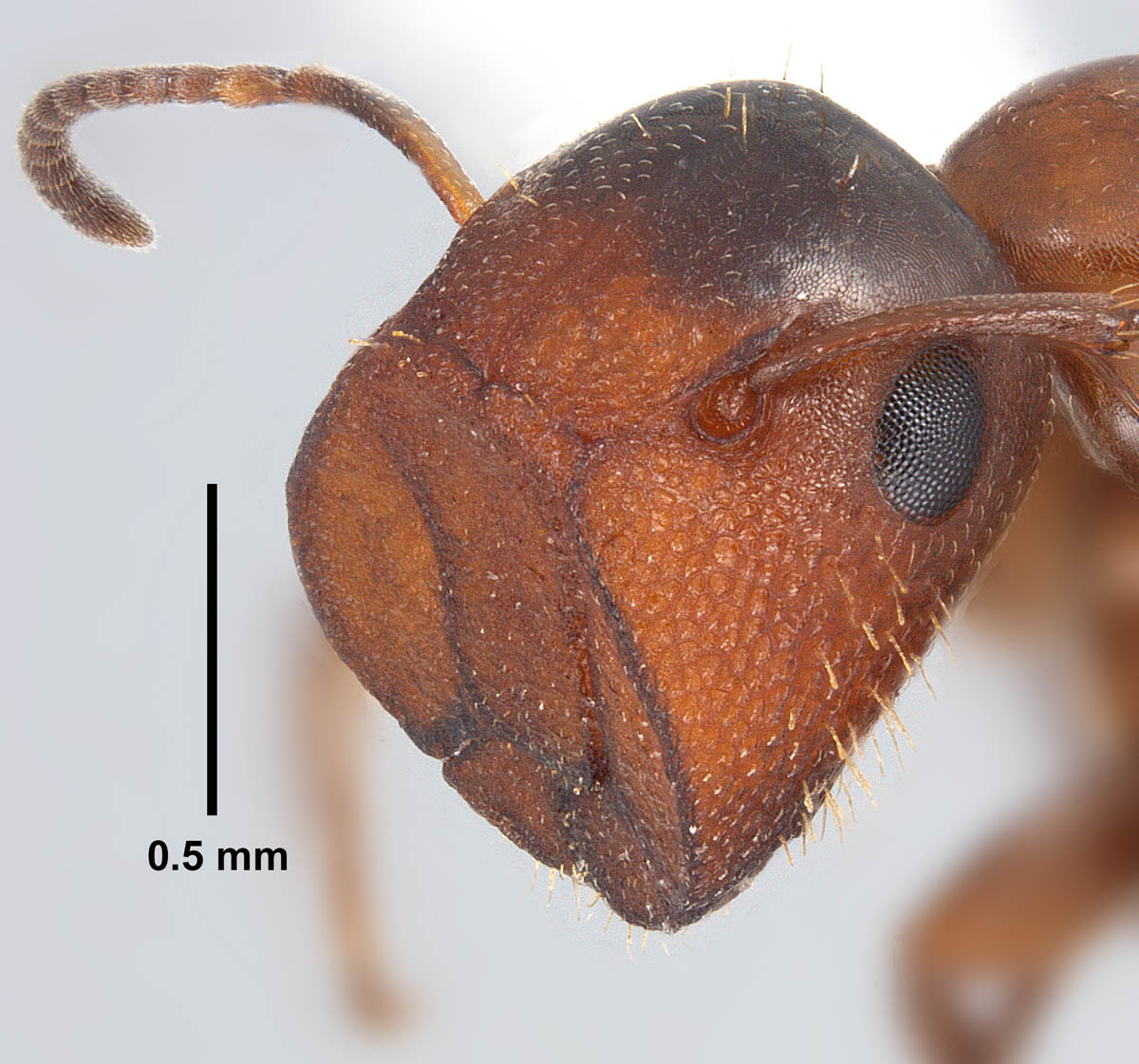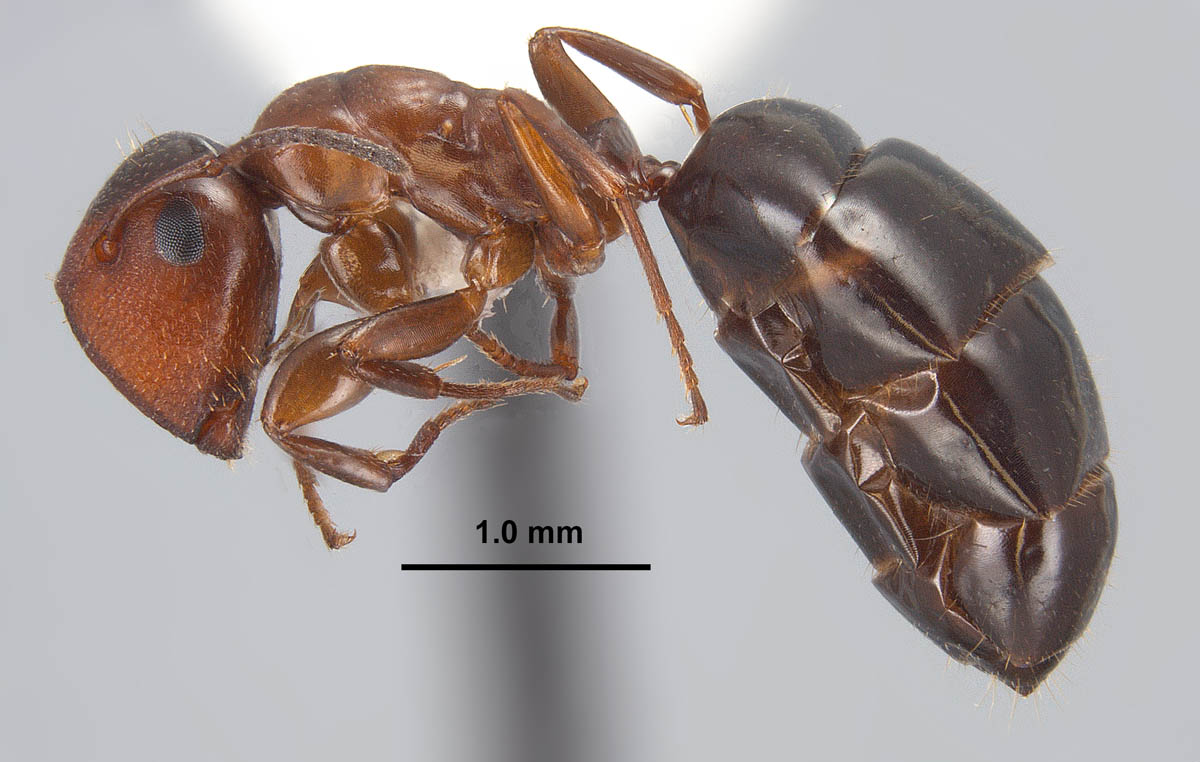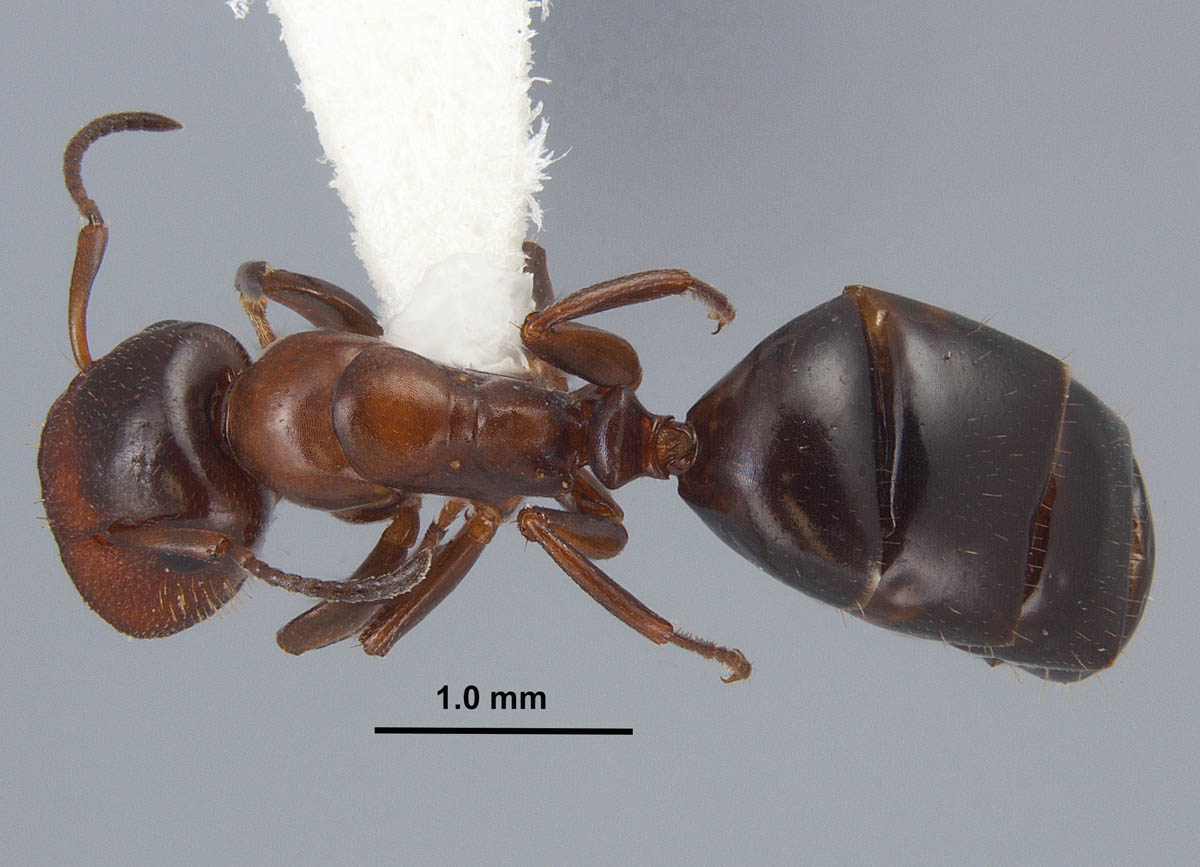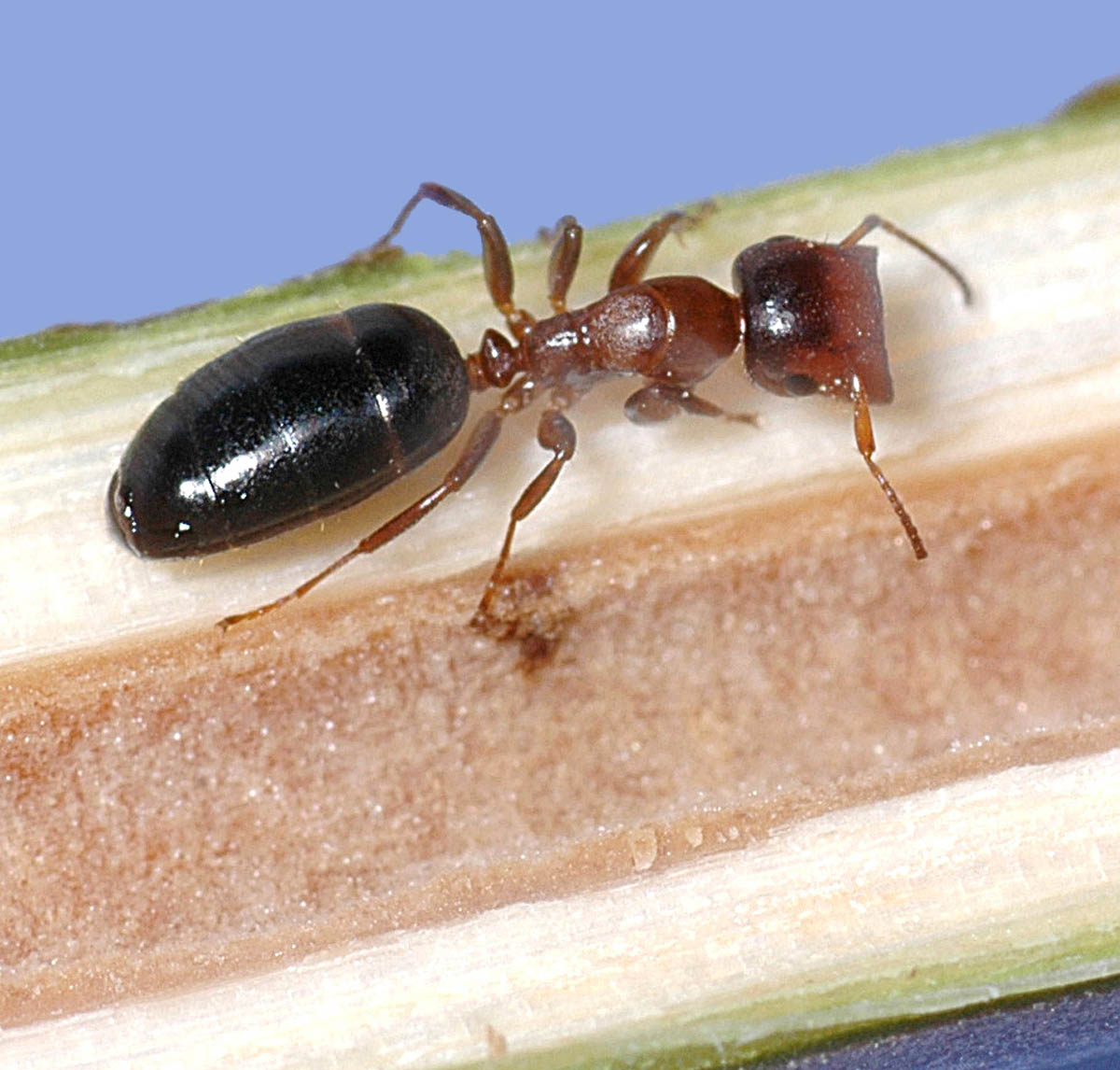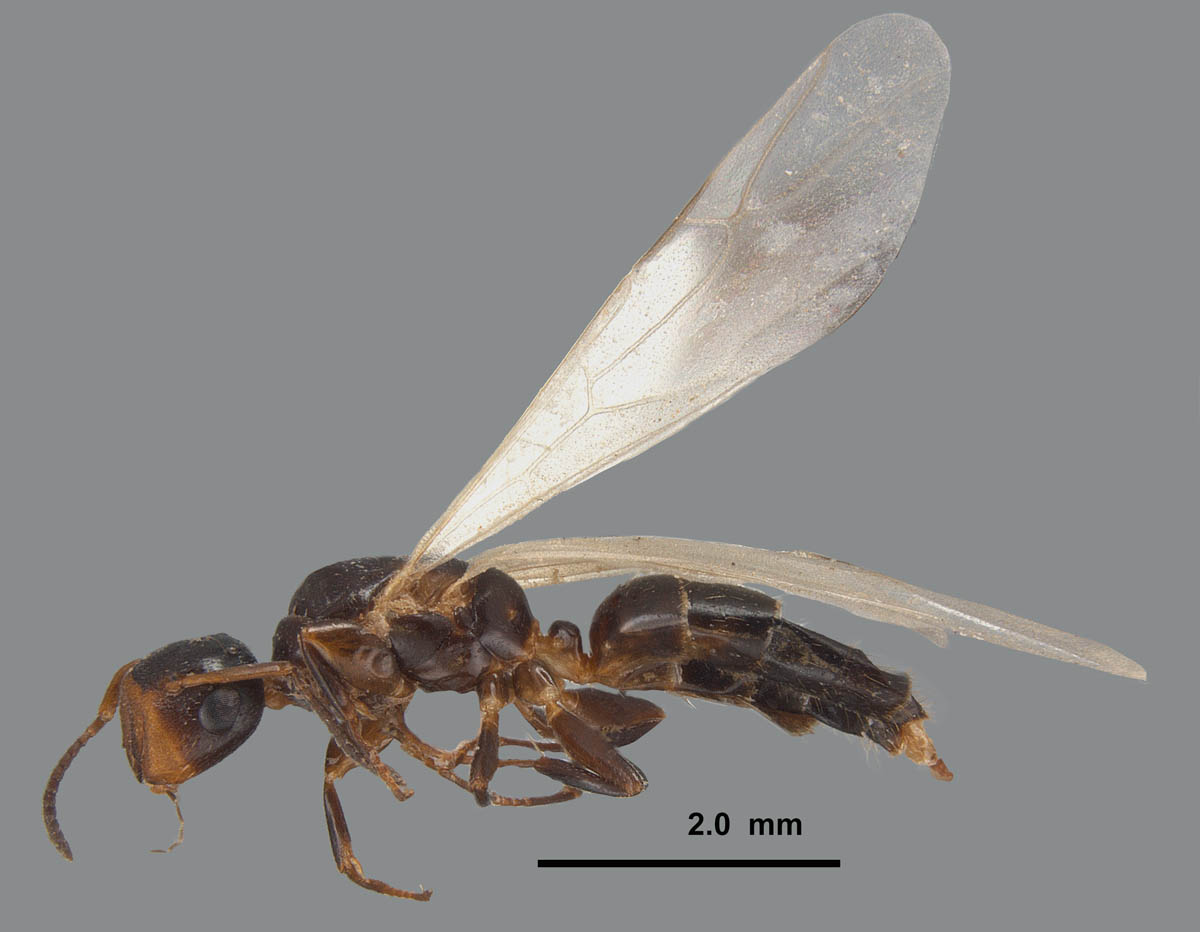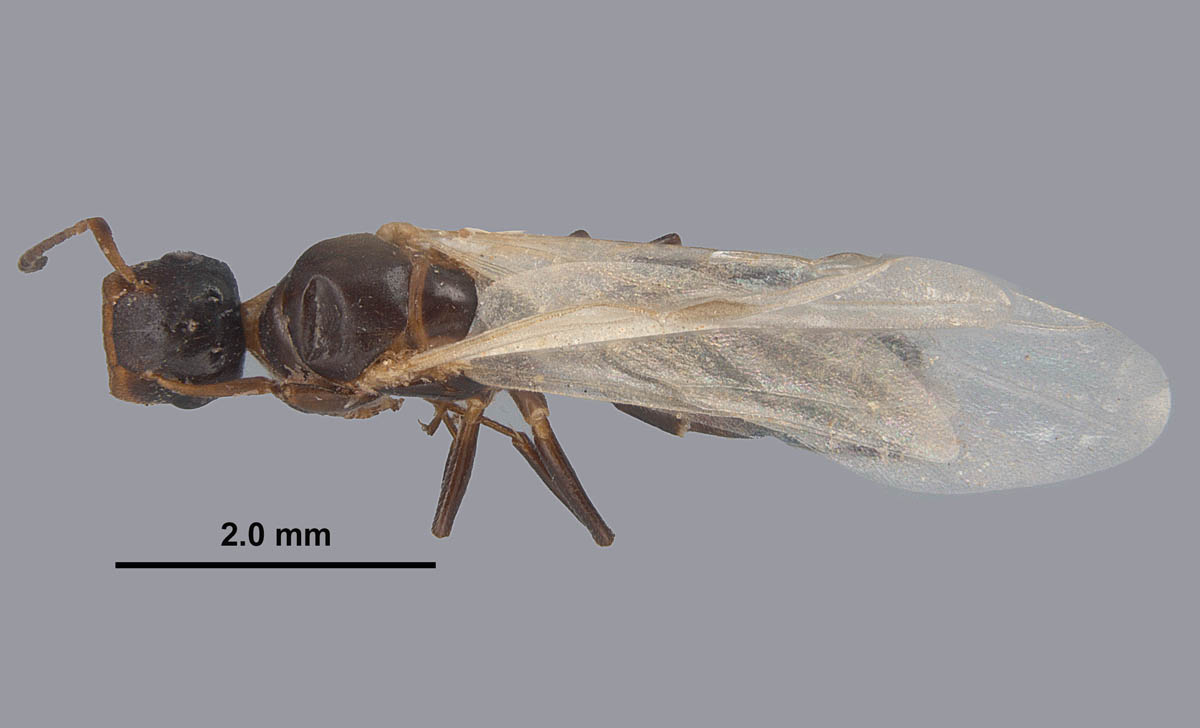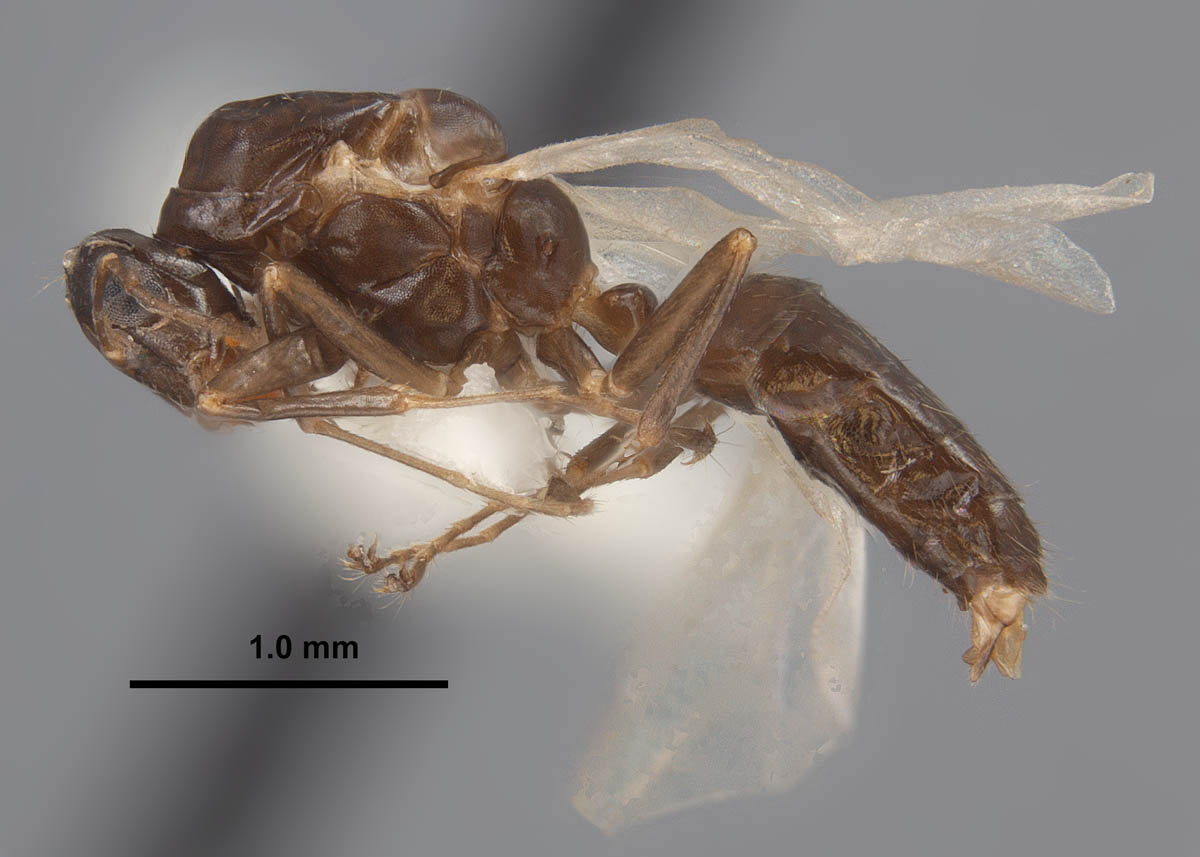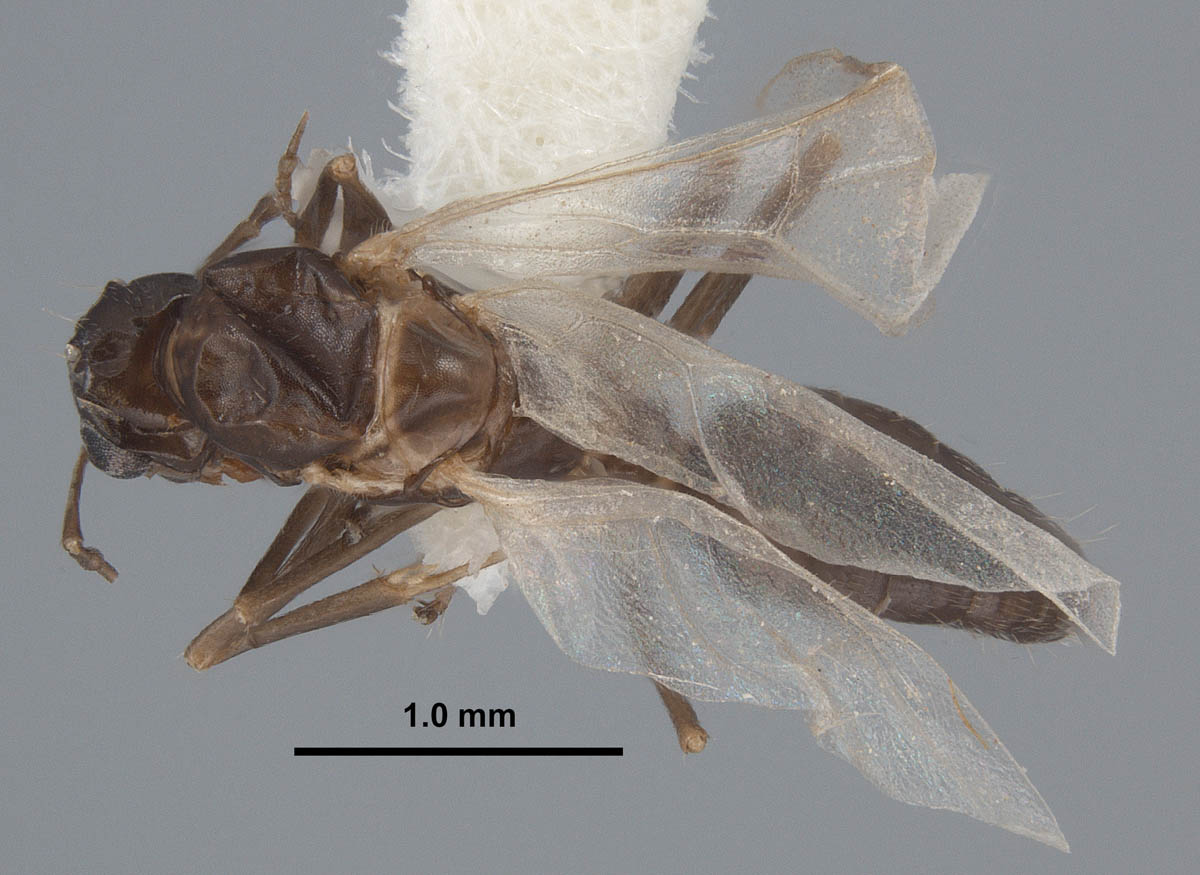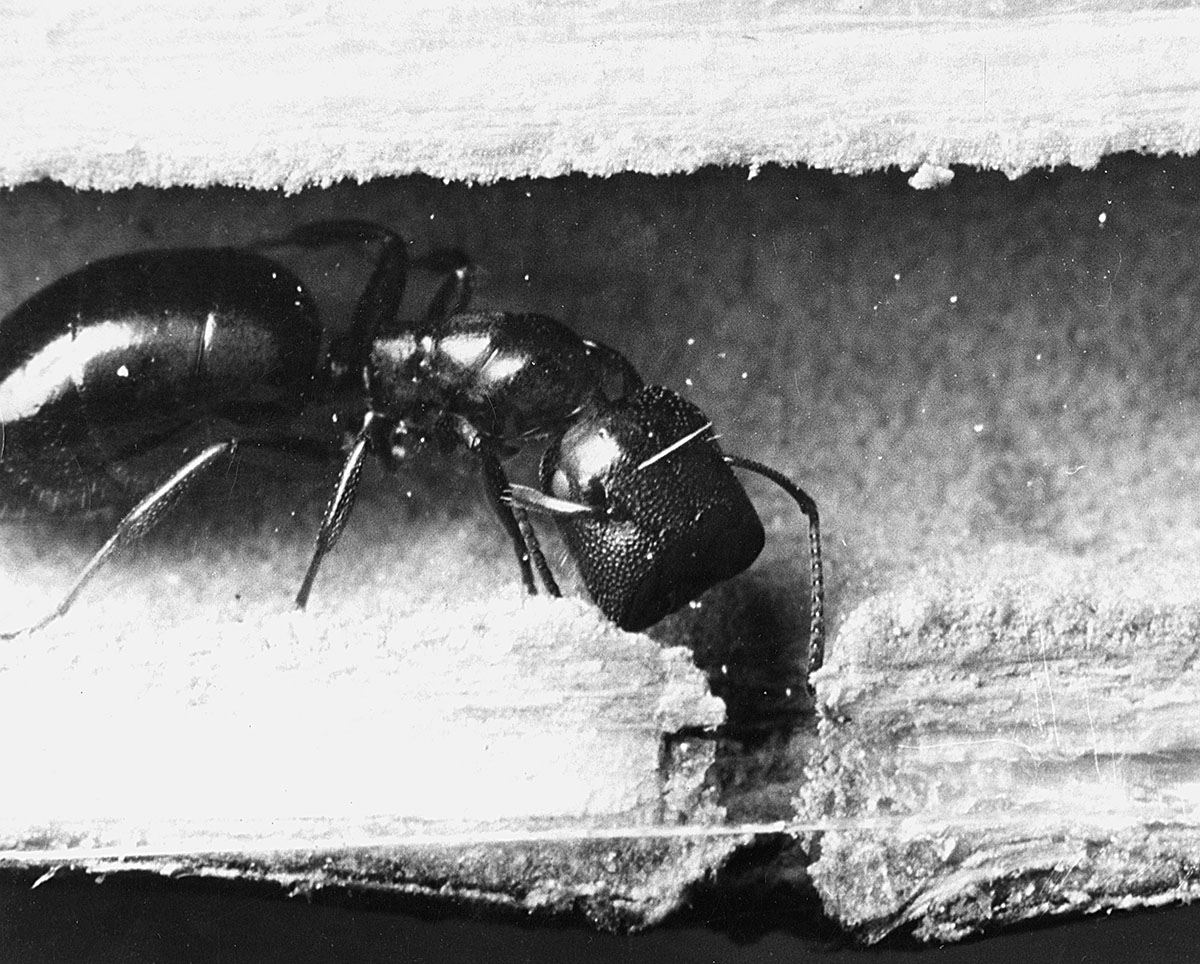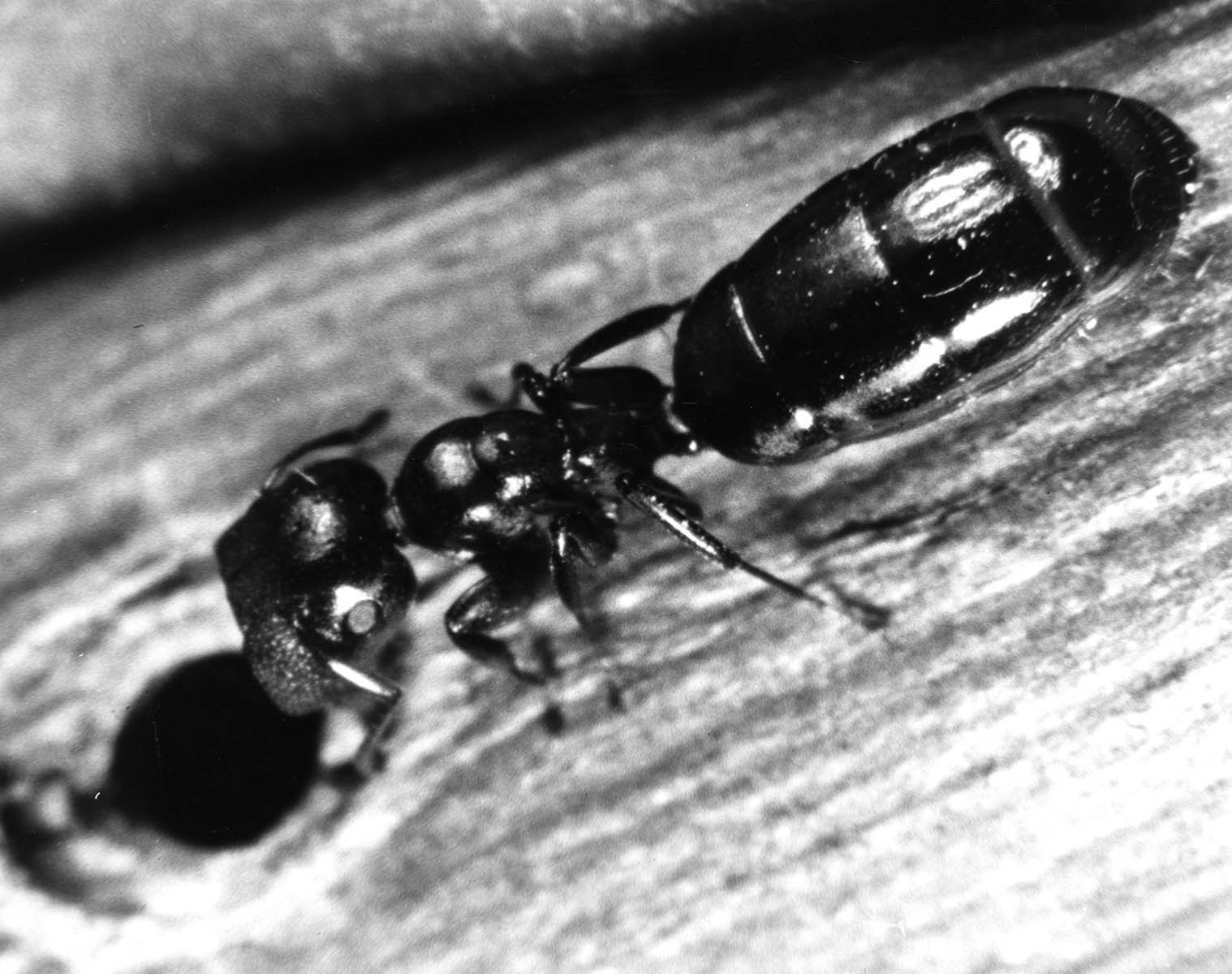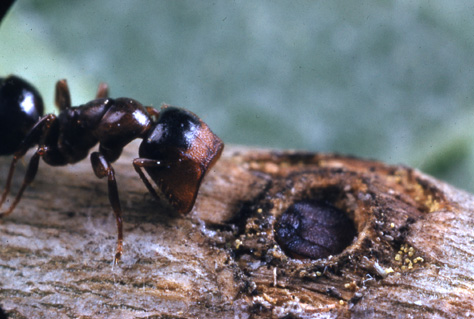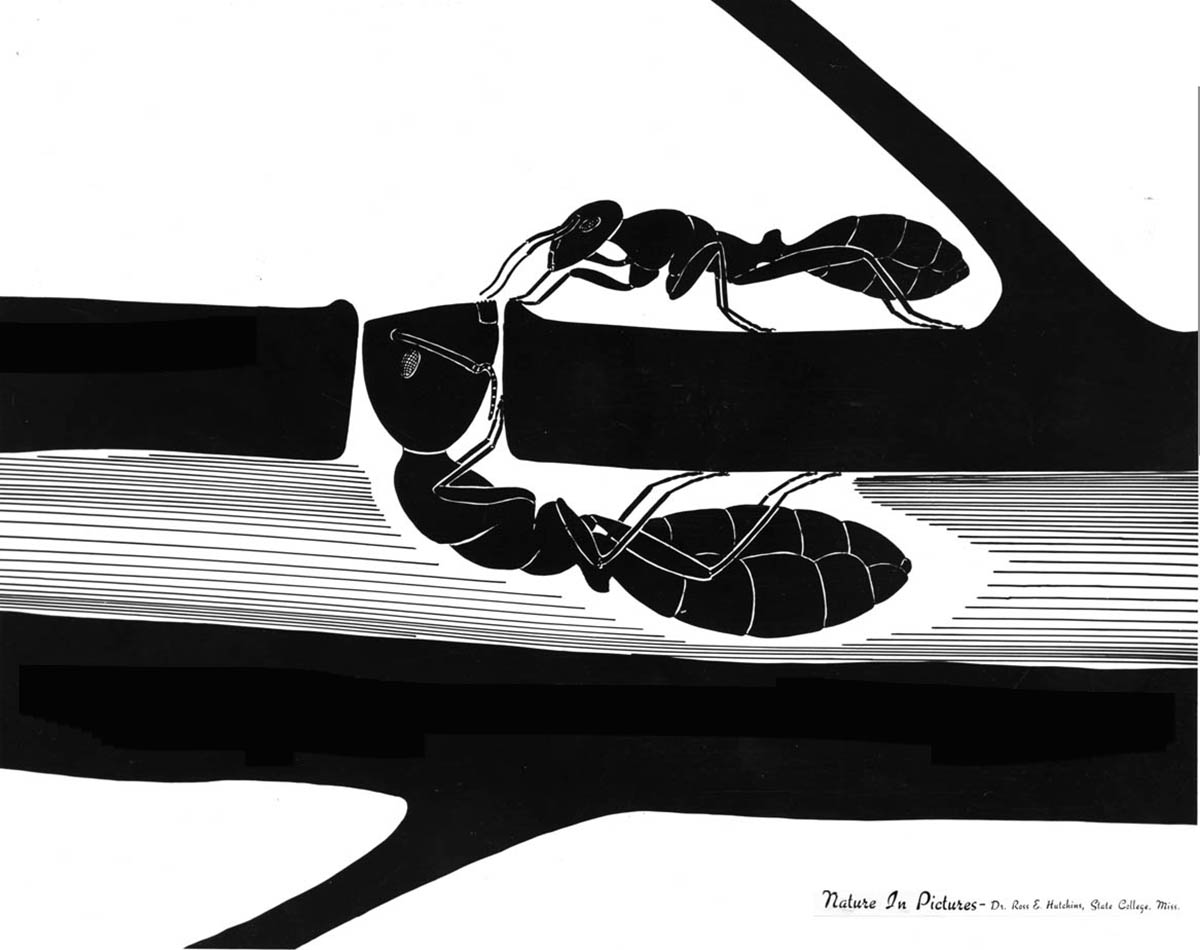Subfamily FORMICINAE Author: Joe A. MacGown |
||
Colobopsis mississipiensis, full face view major worker (MS, Oktibbeha Co.) (photo by Joe A. MacGown) |
Colobopsis mississipiensis, angled view of the head of a major worker (MS, Oktibbeha Co.) (photo by Joe A. MacGown) |
Colobopsis mississipiensis, angled view of the head of a major worker (MS, Oktibbeha Co.) (drawing by Joe A. MacGown) |
Colobopsis mississipiensis, lateral view of a major worker (MS, Oktibbeha Co.) (photo by Joe A. MacGown) |
Colobopsis mississipiensis, dorsal view of a major worker (MS, Oktibbeha Co.) (photo by Joe A. MacGown) |
Colobopsis mississipiensis, major worker on twig of Ash (Fraxinus americana L .). (MS, Oktibbeha Co.) (photo by Joe A. MacGown) |
Colobopsis mississipiensis, full face view of a minor worker (MS, Oktibbeha Co.) (photo by Joe A. MacGown) |
Colobopsis mississipiensis, lateral view of a minor worker (MS, Oktibbeha Co.) (photo by Joe A. MacGown) |
Colobopsis mississipiensis, dorsal view of a minor worker (MS, Oktibbeha Co.) (photo by Joe A. MacGown) |
Colobopsis mississipiensis, full face view of a queen (MS, Lowndes Co.) (photo by Joe A. MacGown) |
Colobopsis mississipiensis, lateral view of a queen (MS, Lowndes Co.) (photo by Joe A. MacGown) |
Colobopsis mississipiensis, dorsal view of queen (MS, Lowndes Co.) (photo by Joe A. MacGown) |
Colobopsis mississipiensis, lateral view of a male (MS, Lowndes Co.) (photo by Joe A. MacGown) |
Colobopsis mississipiensis, dorsal view of male (MS, Lowndes Co.) (photo by Joe A. MacGown) |
|
Colobopsis mississipiensis, a major worker inside of a hollowed branch of white ash (photo by Ross Hutchins) |
Colobopsis mississipiensis, a major worker near the entrance hole of its colony inside a branch of white ash (photo by Ross Hutchins) |
Colobopsis mississipiensis, a major worker standing near the entrance hole to its nest, which is blocked by the face of another major worker (photo by Ross Hutchins) |
Colobopsis mississipiensis, a major worker inside of a hollowed branch of white ash; the head being used as a living doorway for the colony (drawing by Ross Hutchins) |
||
Introduction Colobopsis mississipiensis is a relatively small carpenter ant with major ranging from 4.5 to 5.5 mm and minors 3.5-4.0 mm. Major workers of C. mississipiensis can be easily recognized by the deeply concave, truncated surface of the head with the sides of the truncated area very sharp and well defined except in the posterior part of the clypeus. When viewed from above, the head of majors of this species have sides that diverge anteriorly and have the anterior part of the head very concave or hollowed out. Taxonomic History (Bolton 2018) Diagnosis Biology and Economic Importance Distribution U.S. Distribution: (AL, FL, LA, DC,, MS, NC. SC, TN) (Antweb.org and MEM). Southeastern U.S. Distribution: (AL, FL, LA, MS, NC. SC, TN) (MEM). Acknowledgments Literature Cited Smith, M. R. 1923. Two new Mississippi ants of the subgenus Colobopsis. Psyche (Cambridge) 30: 82-88. Tynes, J. S. 1964. Biological and ecological studies of ants of the subgenus Colobopsis in Mississippi. M. S. Thesis, Mississippi State College, State College. i-vii + 73 pp. Ward, P. S., Blaimer, B. B., and Fisher, B. L. 2016. A revised phylogenetic classification of the ant subfamily Formicinae (Hymenoptera: Formicidae), with resurrection of the genera Colobopsis and Dinomyrmex. Zootaxa 4072: 343-357. Wheeler, G. C. and Wheeler, J. 1953. The ant larvae of the subfamily Formicinae. Part II. Annals of the Entomological Society of America 46:175-217. Links |
||



